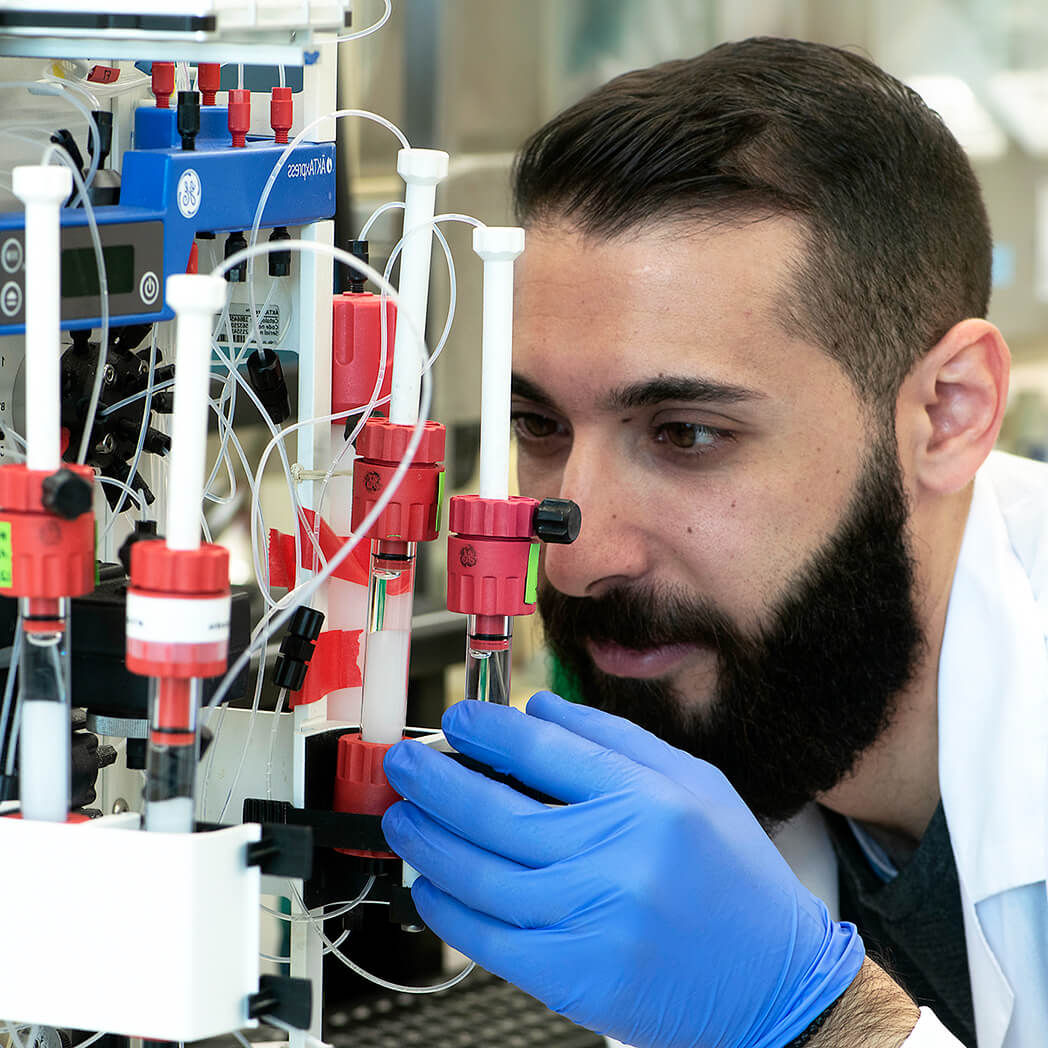Overview
|
Cat #:
M-140
Purity: >99% (HPLC)
MW: 7379 Da
Form: Lyophilized
Muscarinic Toxin 3 (#M-140) is a highly pure, natural, and biologically active peptide toxin.
Alternative Name MT3, MT-3
MW: 7379 Da
For research purposes only, not for human use
Applications
Our Bioassay
Our bioassay
 Alomone Labs Muscarinic Toxin 3 inhibits Muscarinic Receptor 4 expressed in CHO-K1 cells.CHO-K1 cells were co-transfected with human M4 and Gα15 in order to couple the M4 receptor to the Ca2+ signaling pathway. Ca2+ concentrations were monitored using FLIPR. Cells were first incubated in the presence of different concentrations of Muscarinic Toxin 3 (#M-140) followed by Oxotremorine. The percentage of M4 receptor inhibition was plotted versus different concentrations of Muscarinic Toxin 3. The IC50 value of Muscarinic Toxin 3 was between 100 to 1000 nM.
Alomone Labs Muscarinic Toxin 3 inhibits Muscarinic Receptor 4 expressed in CHO-K1 cells.CHO-K1 cells were co-transfected with human M4 and Gα15 in order to couple the M4 receptor to the Ca2+ signaling pathway. Ca2+ concentrations were monitored using FLIPR. Cells were first incubated in the presence of different concentrations of Muscarinic Toxin 3 (#M-140) followed by Oxotremorine. The percentage of M4 receptor inhibition was plotted versus different concentrations of Muscarinic Toxin 3. The IC50 value of Muscarinic Toxin 3 was between 100 to 1000 nM.
Citations (1)
Citations
Product citations
- Hernández-Martínez, R. et al. (2015) J. Neurophysiol. 113, 796.
Specifications
Properties
Technical Specifications
Origin Natural protein isolated from Dendroaspis angusticeps (Eastern green mamba) (Naja angusticeps).
MW 7379 Da
Sequence LTCVTKNTIFGITTENCPAGQNLCFKRWHYVIPRYTEITRGCAATCPIPENYDSIHCCKTDKCNE.
Modifications Disulfide bonds between Cys3-Cys24, Cys17-Cys42, Cys46-Cys57and Cys58-Cys63.
Peptide Content 100%
Purity >99% (HPLC)
Molecular formula C319H489N89O97S8.
Form Lyophilized powder.
Accession number P81031.
Biological Activity
Target M1, M4 muscarinic receptors, adrenoceptors
Effective concentration 100-1000 nM.
Activity Muscarinic receptor 4 and adrenoceptor antagonist1-4.
References
- Jolkkonen, M. et al. (1994) FEBS Lett. 352, 91.
- Karlsson, E. et al. (1994) Ann. N.Y. Acad. Sci. 710, 153.
- Caulfield, M.P. and Birdsall, N.J. (1998) Pharm. Rev. 50, 279.
- Nareoja, K. et al. (2011) Br. J. Pharmacol. 164, 538.
Solubility and Storage
Shipping and storage Shipped at room temperature. Product as supplied can be stored intact at room temperature for several weeks. For longer periods, it should be stored at -20°C.
Solubility Any aqueous buffer. Centrifuge all product preparations before use (10000 x g 5 min).
Storage of solutions Up to two weeks at 4°C or three months at -20°C.
Scientific Background
References
Scientific background Muscarinic toxins are isolated from the venom of the mamba species and are composed of 65 to 66 amino acid residues with four intramolecular disulfide bridges. One of these is muscarinic toxin 3 (MT-3) which was isolated from the green mamba (Dendroaspis augusticeps) and is composed of 65 amino acid residues1. A recent study investigated the interaction of MT3 with cloned receptors (mAChRs and adrenoceptors) expressed in insect cells by radioligand binding. MT3 appears to have a broad spectrum of targets showing high-affinity binding (IC50 = 1-10 nM) to M4 mAChR, α1A-, α1D- and α2A-adrenoceptors and lower affinity binding (IC50 > 25 nM) to α1B- and α2C-adrenoceptors and M1 mAChR2.
References
- Bradley, K.N. (2000) Pharmacol. Ther. 85, 87.
- Nareoja, K. et al. (2011) Br. J. Pharmacol. 164, 538.
Last Update: 08/01/2025

